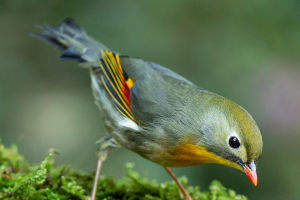The mallard is a widespread and most common waterfowl. It is 47-62 cm long, weighs about 1 kg, and is similar in size to a domestic duck. Male mallard beak yellow-green or olive green. The head and neck are green with a shiny metallic luster, and the neck has a white collar.
The upper body is dark brown, the waist and tail coverts are black, the central two pairs of tail feathers are black, curled upward into a hook shape, and the outer tail feathers are white. Wings, flanks and belly greyish white.
Mallards usually inhabit the banks of freshwater lakes, and also live in groups in waters such as rivers, lakes, reservoirs, bays, and coastal salt flats. Ducks have webbed feet between their toes, but they rarely dive. When swimming, the tail is out of the water, and it is good at foraging, playing and courting in the water. Often groomed in water and on land, they look after each other while sleeping or resting. Mallards are mainly found in temperate waters of Europe, Asia and northern America. It winters mainly in Europe, southern Asia, North Africa and Central America.
Mallard ducks are omnivorous. It mainly eats plant foods such as leaves, buds, stems, algae and seeds of wild plants, and also eats animal foods such as mollusks, crustaceans, and aquatic insects. They also often visit harvested fields to feed on scattered grains during autumn migration and wintering. Foraging mostly in the early morning and dusk, during the day they often rest on the beach on the banks of rivers and lakes or on sandbars and small islands in the middle of the lake, or swim in the open water.
American biologists have found that mallards have the habit of controlling part of the brain to stay asleep and part of it to stay awake. That is, mallards can open one eye and close the other during sleep. This is the first evidence scientists have found that animals can control sleep. Scientists point out that the half-sleeping habit of birds such as mallards helps them escape predation by other animals in dangerous environments.
In addition to the breeding season, they often live in groups, especially during migration and wintering, often forming large groups of dozens, hundreds or even thousands. Either swim on the surface, or live on sandbars or shores near the water.
Spring and autumn are the periods of mallard migration, with spring migration from early to late March, autumn migration from late September to late October, and some as late as early November. The migration is carried out in batches and gradually, especially in autumn, the migration is most obvious, and the number is also more than in spring, which can reach more than 1,000.


